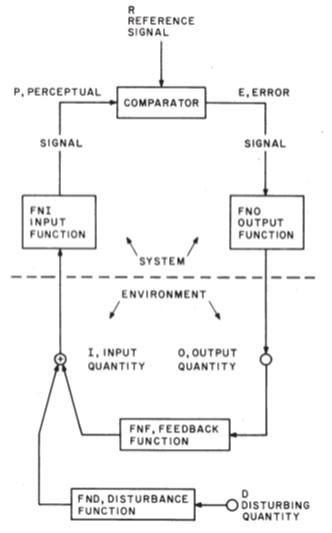[From Bruce Abbott (2017.10.08.1620 EDT)]
Rick Marken (2017.10.08.1100) –
RM: In psychological experiments the experimenter manipulates a variable that they know they are manipulating that is quite visible; it’s called the independent variable. From a PCT perspective, this variable is a disturbance to a controlled variable; it’s the controlled variable that is not known to or seen by the experimenter.
RM: Variations in the controlled variable are not what is seen as “stimuli”. What experimenters see as stimuli are the independent variables they manipulate, which a PCT researcher understands to be disturbances to controlled variables.
BA: An independent variable is a variable that an experimenter manipulates (changing its value); a dependent variable is a variable that an experimenter observes to determine whether it varies as a function of the value of the independent variable. Stimuli can be manipulated in an experiment, in which case they serve as independent variables. But stimuli may also be held constant during an experiment, in which case they do not serve as independent variables. Moreover, independent variables are not necessarily stimuli. For example, one might vary the dose of a drug or the time between presentation of a nonsense syllable and the signal to try to recall it. Dose and time thus serve as independent variables but they are not stimuli.
BA: It is also not the case that all independent variables or stimuli have whatever observable effects they produce by acting as a disturbance to some controlled perception. I may be less likely to notice a tone if it is presented against a background of white noise, but the noise is affecting a perceptual discrimination, not necessarily disturbing a controlled variable.
RM: For example, take a classic social psychology experiment on “conformity”. Subjects are shown two lines of identical length and asked which is longer. They do this in groups where all members of the group except the subject are cohorts of the experimenter. All these cohorts say that the lower line is longer than the upper one. The dependent variable is whether the subject goes along with the group and says the lower line is longer or not (that’s the measure of “conformity”).
RM: One of the independent variables that has been manipulated in experiments on conformity is the number of people in the cohort group. What is found is that the more people in the cohort group the more likely it is for a subject to conform (agree with the group). The conventional interpretation of this is that increases in the size of the cohort group cause increases in conformity. The PCT interpretation of this is that the size of the cohort group is a disturbance to a controlled variable and conformity is an action that compensates for this disturbance. The controlled var iable is probably something like “being seen as an oddball”. If a subject’s reference for this variable is very low – they don’t want to be seen as an oddball at all – then they will conform even if there is only one cohort present; subjects with a very high reference for this variable - who don’t care about being seen as an oddball – won’t conform even if there are many cohorts disagreeing with them.
RM: So PCT explains the apparent effect of the independent variable (number of cohorts) on the dependent variable (conformity) as control of an input variable; it’s not number of cohorts causing the subject to conform; it is the subject controlling for not being seen as an oddball. And it explains the statistical relationship between independent and dependent variable that is found in these experiments as being a result of different subjects having different references for being seen as an oddball.
BA: I like your interpretation of the results of this experiment, although of course it requires experimental confirmation. However, even if your explanation is correct, it does not invalidate the original finding; rather, it explains it. As you note, it also offers a potential explanation for why some individuals’ willingness to conform is strongly affected by the number of cohorts, others less so, and perhaps others still, not at all.
Bruce
